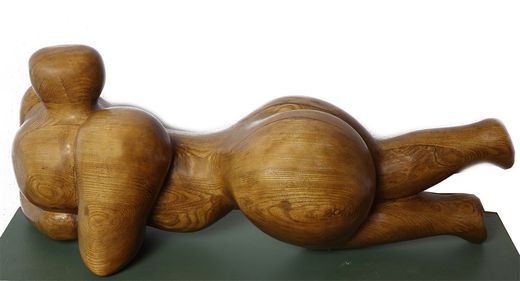
Biography
Born in Leeds, England, she attended the School of Fine Arts and then the Royal College of Art, London, 1950-1953. Installed in France for 52 years, she has been busy for many years recreating the forms of life beyond life itself. We thus have the impression that in the world around us, the forms are always in search of another and definitive identity.
However, in this almost telluric approach of the world and life, only the sculptor seems able to draw a power and deflect a path. She/He alone seems to have to intervene and interfere to finally give an order to chaos and a symbol to destiny.
It is in this approach that one can appreciate the work of Pat Rowland. Every anthological exhibition strives to bring together the scattered fragments of the work to give the most complete dimension. And this is especially important for an artist like Pat Rowland who has practiced for so many years what might be called a sculpture of metamorphoses.
From the famous Leeds school, so influential in the history of contemporary sculpture with giants like Henry Moore and Barbara Hepworth, Pat Rowland has been able to identify her own personality and seek other accents in contact with the Catalan country or a Mediterranean south that is perfectly suited to her warm temperament.
By its lines of force, its contractions or its impulses, and its deformations, this sculpture also seems to be related to centuries of tradition to affirm the permanence of a testimony of civilization. By saying this, we can not avoid the temptation to go further and to move towards the sacred by following this drift of forms that try to escape the world of the ephemeral to access that of endurance and harmony, thereby asserting a divine presence. Even if the sculptor no longer proceeds from the Greek ideal or a strictly religious representation that has long been his intention, the quest for the essence of forms rests, even primitively, on purity, the primordial or the mythical.
Nationality
Themes